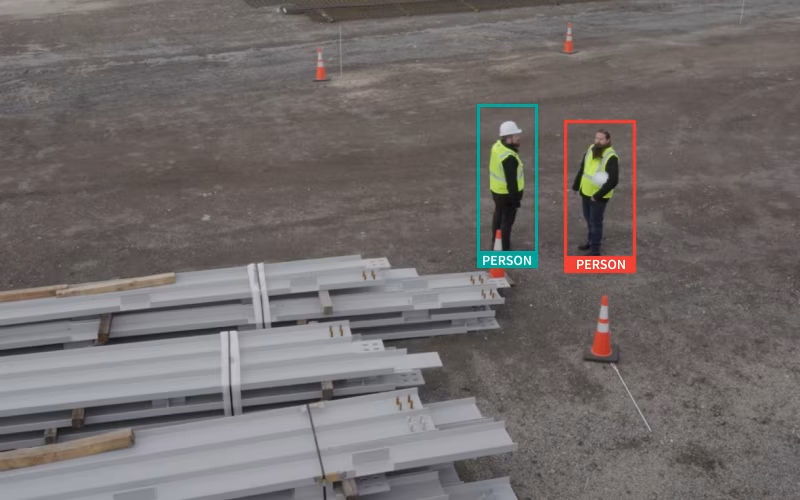Understanding Shoplifting Behaviors

A key to preventing shoplifting and ORC is to understand what to look for and how to stop them from entering your property.
Have you ever worked with chocolate? Have you ever had to temper it, keep it liquid, or even just chop it up? If you haven’t, know that chocolate is a weird food. Not in taste (I think it qualifies for its own food group and is a staple in my diet), but in its qualities. Whether liquid or solid, its behaviors are just weird. For example, when solid, chocolate forms a crystalline structure that will fragment on planes similar to rocks. You can encourage it to break in certain places with scores and molds, but it still forms weaker points between the crystals. When the chocolate is liquid, you have to keep it in a very tight temperature range, or it will knock it out of temper. Tempering chocolate is a process of heating and cooling that stabilizes the crystals and the cocoa butter in the chocolate so once it is set, the chocolate is crisp, smooth, glossy, and more stable.
Liquid chocolate is one of the most finicky foods—too hot or cold and it will freak out, any water will ruin it, and it has to be kept in constant motion to stay liquid. Basically, if you show any fear, the chocolate will sense it and wig out just because it can.
I have been working with chocolate since I was a child. Every year, my family makes thousands of candies and gives them away to our friends and neighbors. Typically, this takes a couple months where we make batches of creamy fondants, toffees, marshmallows, and caramels. A batch normally has between 70 and 100 pieces. Clearly, while working with chocolate is hard, it is possible. I’ve grown up learning how to do it, but it is a teachable skill. Anyone who takes the time to learn about chocolate and its behaviors can do it. Then, once you understand how chocolate behaves, you can combat each trick and can handle it effectively.
The same is true for criminals, especially shoplifters. Once you learn how they behave, it’s easier to combat them and prevent retail theft. Shoplifters are clever and they know what strategies work. However, if you pay attention, you’ll see patterns in their behaviors and methods that can help you prevent future incidents.
Here are a few things to watch for:
Body Language
Shoplifters are often fidgety or look uncomfortable. They will avoid eye contact while observing employees, not items. They will look around often—looking for staff and security cameras—rather than looking at the shelves.
Thick, Excessive Clothing
Winter is cold, but even during the coldest days most honest customers wear a single coat. Since the stores are climate controlled, multiple layers or extra coats are not needed. Shoplifters use extra and baggy clothing to hide stolen items.
Large or Multiple Bags
Similar to excessive clothes, shoplifters will use large handbags, backpacks, and even reusable shopping bags to steal large quantities of products. If you have ever set foot in a store, you know that the bulk of women carry some sort of a bag—a purse, small backpack, a clutch, or a wallet. More men are also carrying bags including diaper bags or even fanny packs. However, unlike regular everyday customers, shoplifters tend to carry large bags or even multiple bags. Remember, their goal is to steal as much as possible, not carry the all-important diapers and change of clothes.
Distracting Employees
Shoplifters want to get away clean with stolen merchandise. To do this they often distract employees to get them away from the items they want to steal. Sometimes they may ask for store associates to check the back for an out-of-stock item or they may ask for the employee to show them where a product is and have a partner steal merchandise.
Large Groups
This leads to the last behavior—shoplifters will often work in groups or organized gangs. Organized retail crime is a growing trend as thieves become more brazen. Sometimes, ORC gangs will have a group or person create a distraction, giving the others the opportunity to steal. Other times, ORC gangs will commit flash robbery—a method that includes a group of thieves grabbing as much merchandise as they can and then running. Either way, the large groups are hard to stop and detain.
Deter Thieves From Entering
Even when you know these behaviors, it is hard to stop shoplifters. Furthermore, it can be dangerous to employees and other customers since 68% of retailers say they have seen thieves and ORC gangs be more aggressive and violent in the past year. In fact, it’s becoming more common for retailers to instruct their employees to not engage thieves simply because it’s simply not worth it. However, in order to absorb the cost of stolen merchandise, this strategy forces retailers to raise prices for honest customers.
That’s why we suggest deploying mobile surveillance units from LiveView Technologies (LVT). Our units are proven to reduce grab-and-go thefts by 69%. LVT Units are stationed in the parking lot, not inside the stores. However, by placing them outside stores deter thieves, ORC gangs, and other criminals from entering the property at all. Criminals don’t want to be caught, and LVT security trailers are equipped with cameras, flashing lights, a speaker, and more all aimed at deterring and, if that doesn’t work, then recording evidence of criminal activity.
The trick to preventing theft is to understand their behaviors and methods and then putting measures in place to prevent theft from ever happening. One of those methods is to deploy LVT Units to your parking lot. If you are interested in learning others, watch our recent webinar on other methods to prevent organized retail crime.



